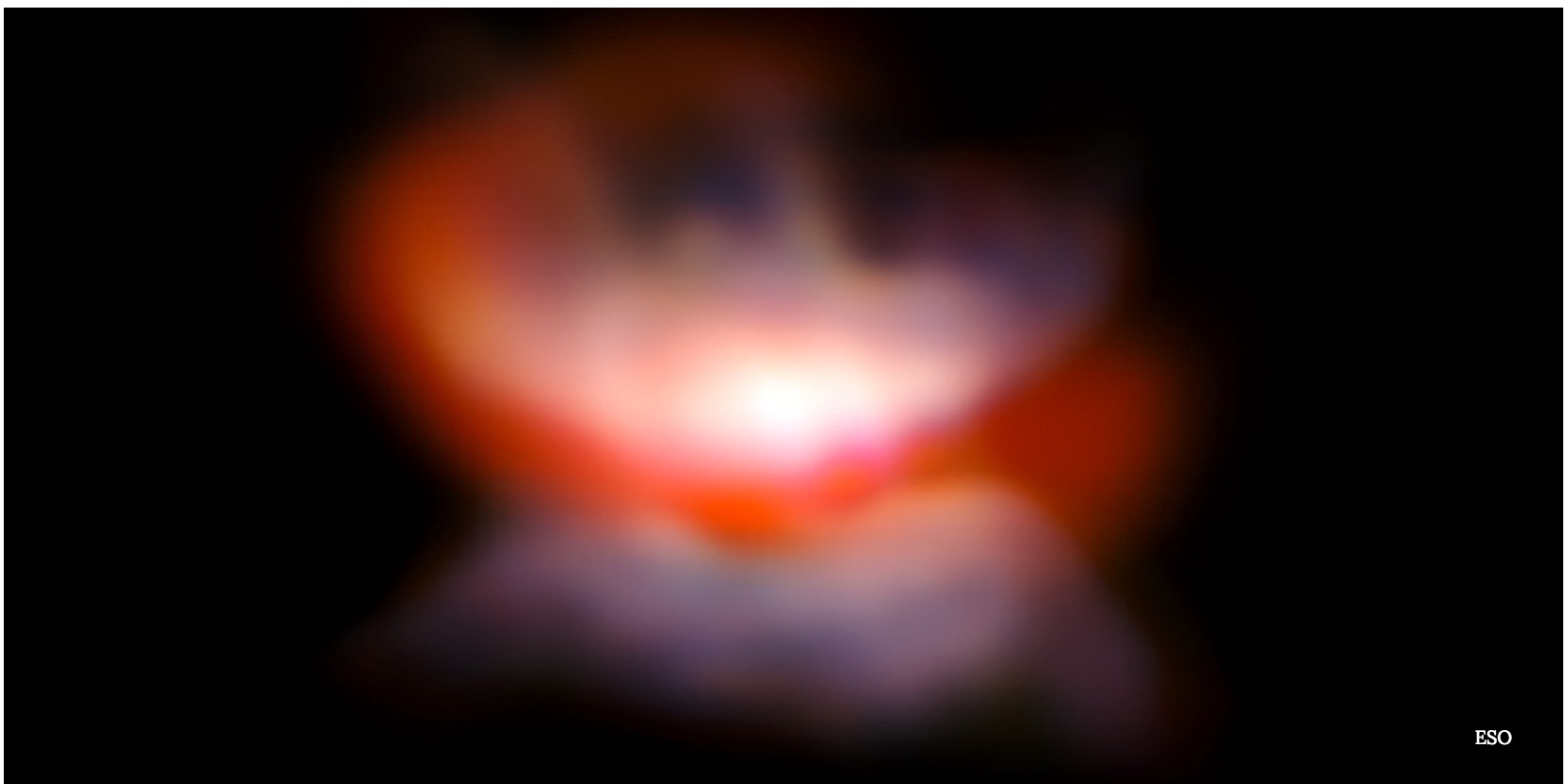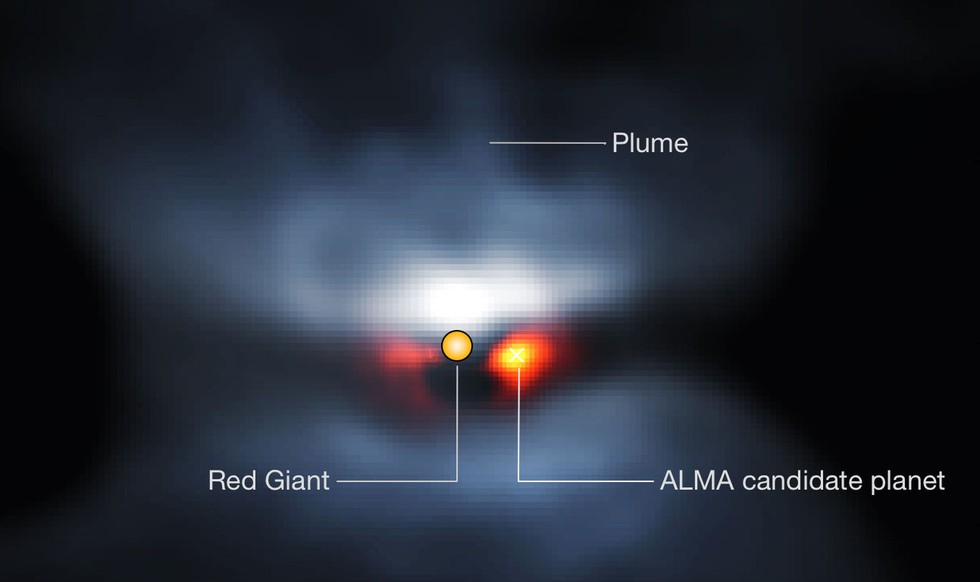Dying Star Offers Glimpse of Earth's Doomsday in 5 Billion Years

Five billion years from now, our sun will die. After running out of hydrogen fuel, it will start burning heavier and heavier elements in its fusion core, causing its body to bloat, shedding huge quantities of material into space via violent stellar winds. During this time, our star will expand around 100 times bigger than it is now, becoming what is known as a "red giant." This dramatic expansion will engulf Mercury and Venus, the two closest planets to the sun.
But what is less clear is what will happen to Earth — will our planet go the way of Mercury and Venus and succumb to an ocean of superheated plasma? Or will our planet escape the worst of the sun's death throes to continue orbiting the tiny white dwarf star that will be left behind?
"We already know that our sun will be bigger and brighter [when entering the red giant phase], so that it will probably destroy any form of life on our planet," said Leen Decin, of the KU Leuven Institute of Astronomy, in a statement. "But will the Earth's rocky core survive the red giant phase and continue orbiting the white dwarf?"
With the help of the most powerful radio observatory on the planet, astronomers could soon have a clue by looking at a nearby star system that resembles how our solar system will look when the sun begins to die.
RELATED: Enjoy Earth Day While You Can, There Are Only 5 Billion Left
L2 Puppis is an evolved star located over 200 light-years from Earth. Though this seems far away, it's pretty much on our cosmic doorstep and well within the resolving power of the Atacama Large Millimeter/submillimeter Array (ALMA) in Chile. Through precise measurements of the star, astronomers have deduced its mass and age, realizing that it is (or was) a sun-like star that's now 10 billion years old. It's also a prime example of a planetary nebula in the making.
Like our sun five billion years in the future, L2 Puppis is ripping itself apart, blasting huge quantities of gas into space. This process creates a massive glowing cloud and this particular planetary nebula resembles a beautiful cosmic butterfly (pictured above by the ESO's Very Large Telescope).
Get the Space.com Newsletter
Breaking space news, the latest updates on rocket launches, skywatching events and more!

"We discovered that L2 Puppis is about 10 billion years old," said Ward Homan, also from KU Leuven. "Five billion years ago, the star was an almost perfect twin of our sun as it is today, with the same mass. One third of this mass was lost during the evolution of the star. The same will happen with our sun in the very distant future."
But that's not all. According to the new study published in the journal Astronomy & Astrophysics, L2 Puppis also appears to have a planet in tow, roughly 300 million kilometers from the star. Though this distance is around twice the distance that Earth orbits the sun, it provides a very privileged view of a world orbiting a dying sun-like star. It's also an ominous preview of what's in store for Earth in a few billion years and the researchers hope to study this unfortunate planet as it experiences the wrath of L2 Puppis.
RELATED: Real Doomsday: Earth Dead in 2.8 Billion Years
"Five billion years from now, the sun will have grown into a red giant star, more than a hundred times larger than its current size," said Decin. "It will also experience an intense mass loss through a very strong stellar wind. The end product of its evolution, 7 billion years from now, will be a tiny white dwarf star. This will be about the size of the Earth, but much heavier: one tea spoon of white dwarf material weighs about 5 tons."
Astronomers often look to the stars to better understand our own place in the galaxy. In this case, they've glimpsed the future and seen a key part of the life cycle of a sun-like star. They've also seen a true doomsday, an event so final that it wrecks our sun, taking the nearest planets with it. And though Earth may or may not be swallowed whole by the swelling stellar inferno, it will be sterilized of life — on our planet's roasted surface at least.
Originally published on Seeker.
Join our Space Forums to keep talking space on the latest missions, night sky and more! And if you have a news tip, correction or comment, let us know at: community@space.com.
Ian O'Neill is a media relations specialist at NASA's Jet Propulsion Laboratory (JPL) in Southern California. Prior to joining JPL, he served as editor for the Astronomical Society of the Pacific‘s Mercury magazine and Mercury Online and contributed articles to a number of other publications, including Space.com, Space.com, Live Science, HISTORY.com, Scientific American. Ian holds a Ph.D in solar physics and a master's degree in planetary and space physics.









